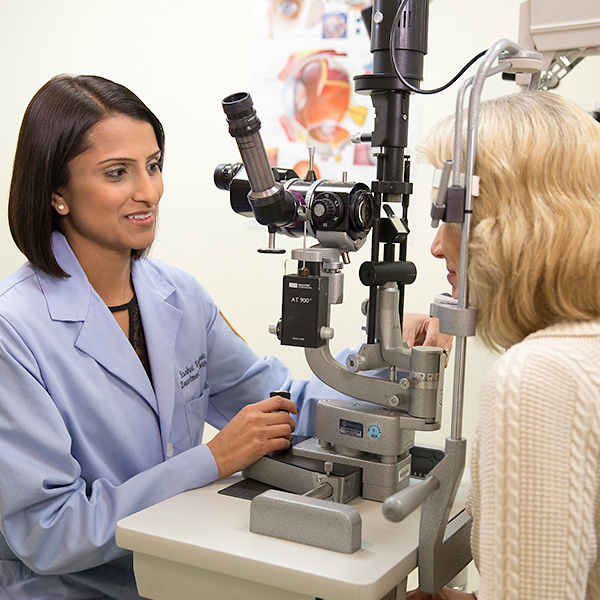Thyroid Eye Disease
Overview and Facts about Thyroid Eye Disease
Thyroid eye disease, also known as Graves eye disease, is a rare autoimmune condition that affects the thyroid (a butterfly-shaped gland at the base of your neck) and causes your eyes to bulge. Thyroid gland cells have the same surface receptors as the soft tissues and muscles surrounding the eyes.
During an autoimmune attack, your immune cells target these receptors and cause the tissues within the eye socket to become inflamed and swell, pushing the eye forward.
Thyroid eye disease may be associated with increased thyroid activity because both are caused by the immune system’s attack on healthy tissue. However, treating thyroid function does not improve symptoms of thyroid eye disease.
Ophthalmology conditions should be carefully monitored and treatments should focus on preserving sight and movement.
Signs and Symptoms of Thyroid Eye Disease
Signs and symptoms of thyroid eye disease are caused by the inflammation and swelling of healthy tissues within the eye socket from an autoimmune attack.
Signs and symptoms of thyroid eye disease include:
- Pain and redness
- Puffiness around the eyes
- Bulging of the eyes
- Dry, irritated eyes
- Increased pressure inside the eye socket
- Headache, which worsens with eye movements
- Decreased vision due to swollen tissues pushing on the optic nerve
- Double vision due to the restriction of the eye’s normal movements
Causes and Risk Factors of Thyroid Eye Disease
Thyroid eye disease is caused by an autoimmune condition in which the body’s immune system attacks healthy tissues and muscles surrounding the eye. An autoimmune attack is characterized by uncontrolled inflammation that results in the swelling and scarring of normal eye tissues. This leads to increased pressure on ocular structures, including the optic nerve, and restricted eye movement.
Patients with thyroid eye disease usually have an underlying autoimmune condition and an overactive thyroid gland. While women are much more likely than men to develop the disease, cigarette smoking is a significant risk factor that can prolong the disease and increase the severity of ophthalmology conditions.
Tests and Diagnosis of Thyroid Eye Disease
To diagnose thyroid eye disease, your doctor will examine your eyes and discuss your history of thyroid problems and autoimmune diseases.
Blood tests may be used to confirm an autoimmune diagnosis, and thyroid scans or uptake tests are used to measure thyroid activity. In some cases, an MRI may be recommended to visualize the extent of swelling of the eye socket.
Treatment and Care for Thyroid Eye Disease
Thyroid eye disease, characterized by inflammation, will eventually go away by itself. Treatment aims to reduce the permanent physical changes that may occur during the disease course and which may damage vision or eye movements. Treatment includes monitoring, correcting double vision, and relieving ocular dryness with artificial tears.
Medications such as prednisone may be prescribed to suppress autoimmune inflammation, and radiation therapy can help reduce swelling in severe cases.
Surgical treatment such as a procedure called orbital decompression may be recommended to return the eye to its normal position within the socket or to prevent loss of vision by relieving pressure on the optic nerve.

Request an Appointment
Whether you are seeking routine eye care or have a specific vision issue, our team treats a wide range of eye diseases and conditions, including cataracts, glaucoma, macular degeneration and strabismus. Schedule an appointment today.
Schedule a Telehealth Appointment
